15 Must-See Works of Art That Will Redefine Your Perspective on Art
Welcome to our blog about 15 must-see works of art that have the power to redefine your perspective on art. These pieces are not only aesthetically pleasing but also carry immense historical, cultural, and social significance. From classic to contemporary, these works of art are considered some of the most valuable and admired in the world.
So, let's dive in and discover the masterpieces that will inspire and enrich your artistic vision.
1. Mona Lisa

Leonardo Da Vinci's most important and well-known painting is the most visited work. The woman in this painting, also known as La Giaconda, is thought to be the wife of Francesco di Bartolomeo del Giocondo, a merchant from Florence, but there is no clear information about who exactly she is. In addition to this rumor, it is also said to include Da Vinci's mother and a self-portrait. Elsa Gody, an expert in the valuation of artworks and antiquities, stated the estimated value of the Mona Lisa by saying, 'If we want to estimate the price of the painting by taking into account the ticket prices of the Louvre Museum and those who visited the Mona Lisa in a certain period of time, the price of the painting exceeds 2 billion dollars. Six million people visit this work in the Louvre Museum in Paris, France every year.
2. The Creation of Adam
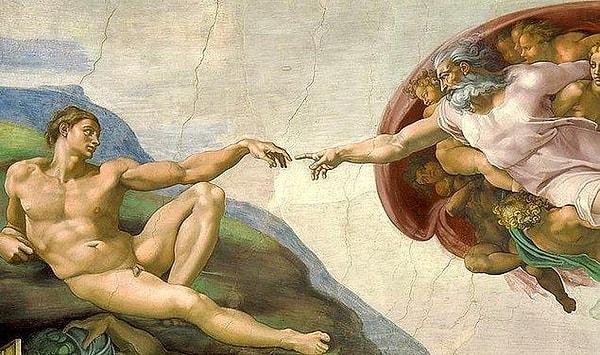
This work by Michelangelo di Lodovico Buonarroti Simoni, or Michelangelo as he was known, -originally known as Creazione di Adam- is one of the most important works of the artist. It is one of the most copied and repeated sacred paintings in history. It is known that the old, muscular and white-haired depiction on the right is God, while the young, vigorous and naked depiction on the left is Adam, the first man. The creation of man is depicted in this painting, which represents God giving Adam a soul by touching him with a fingertip and the bond between God and man. This work, painted between 1508-1512, is in the Vatican Sistina Chapel.
3. Girl with a Pearl Earring

Painted by Dutch painter Johannes Vermeer in the seventeenth century, Girl with a Pearl Earring - Meisje met de parel in Dutch - is also known by many as the 'Mona Lisa of the North' or the 'Dutch Mona Lisa'. As the name of the painting suggests, the focus is on the pearl earrings. It is thought that the woman in the painting is not imaginary. According to rumors, it is said to be Vermeer's daughter or someone fromf his close circle. The painting is now in the Mauritshuis Gallery in the Netherlands.
4. Guernica

In 1937, when Pablo Picasso was asked to create a work of art to be exhibited at the Paris Fair, Picasso could not decide what kind of painting to create, but at that very moment, he created 'Guernica' within fifteen days after the bombers of Nazi Germany in the Spanish Civil War hit the Spanish city of Guernica on April 26, 1937. Guernica is a painting of rebellion and is housed in the Queen Sofia National Museum in Madrid, Spain.
5. The Starry Night
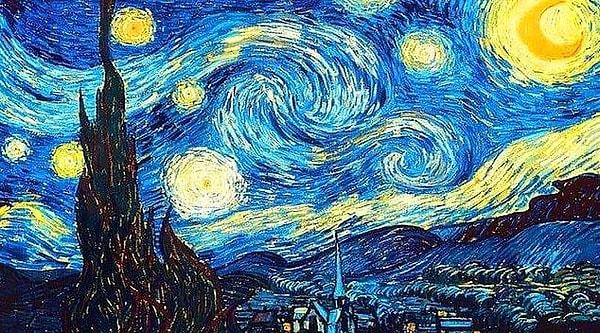
The work was created by the Dutch painter Vincent Van Gogh during his stay in a mental hospital, combining his imagination with the village of Saint-Rémy-de-Provence as seen through the window of his room in the hours before daylight. The work is on display at The Museum of Modern Art in New York, USA.
6. The Scream
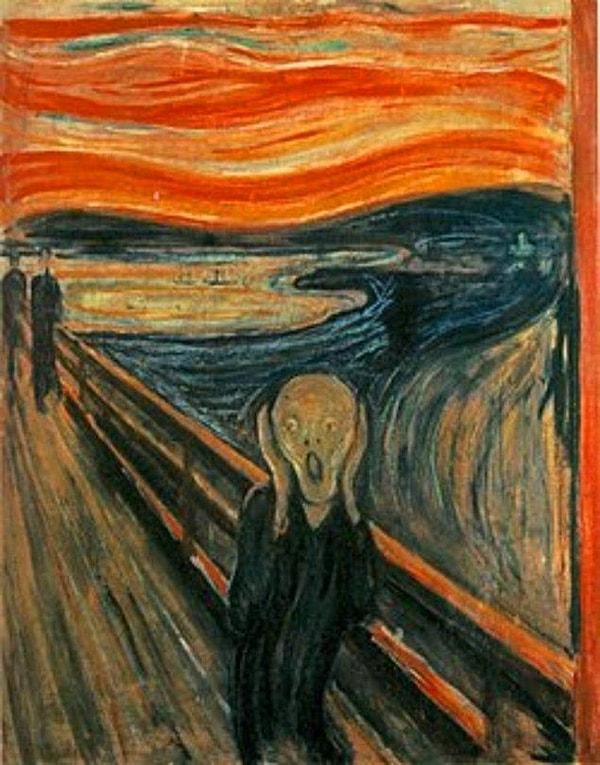
Painted by Norwegian painter Edvard Munch in 1893, the original title of the work was Der Schrei der Natur (The Scream of Nature) in German and Skrik (The Scream) in Norwegian. Behind the depiction of a screaming person, the view of Oslofjord from Ekeberg hill is depicted. Munch mentions the creation of this painting in his diary as follows; On a day when he went for a walk with two friends, the sun was setting in blood-red color, the painter, who was sick at that time, felt tired and leaned against the railing. Stating that he heard the scream of nature at that moment, Munch was influenced by this and created his painting. The painting is now in The National Gallery in Oslo, Norway.
7. The Last Supper
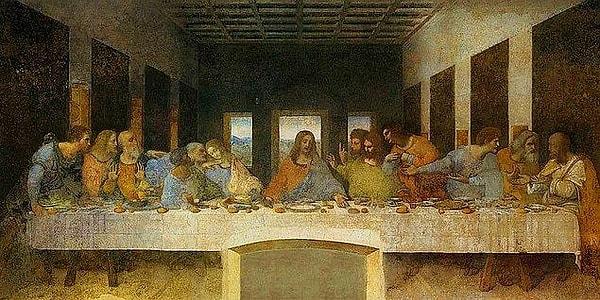
One of Leonardo Da Vinci's most important works, 'The Last Supper' - Italian: Il Cenacolo or L'Ultima Cena - is a fresco painted in the fifteenth century at the request of Duke Lodovico Sforza. According to Christian belief, the painting depicts the dinner Jesus had with his disciples on the last night before his crucifixion. The work is on display in the Church of Santa Maria delle Grazie (Holy Virgin Mary) in Milan, Italy.
8. The Persistence of Memory
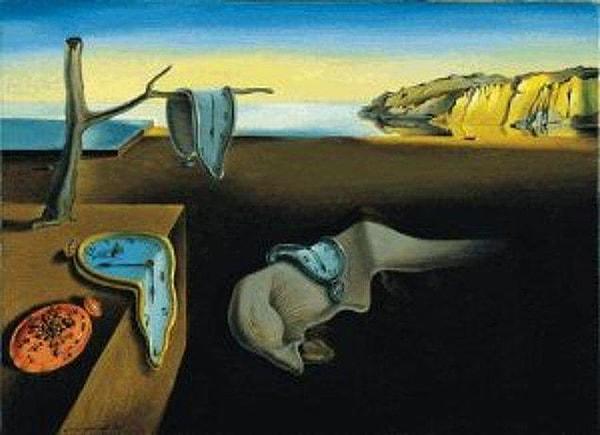
This work by Spanish painter Salvador Dali - La persistència de la memòria in Catalan - was painted in 1931. The formlessly melted clocks in the center of the painting refer to an unreal world. The coastal landscape in the background is the painting's link to the real world. Salvador Dali was inspired by Port Lligat in the Catalonia region of Spain. The painting is on display at the Salvador Dali Museum in Saint Petersburg, Russia.
9. The Birth of Venus

It is one of the most famous works of Italian painter Sandro Botticelli. According to some sources, it is said to have been painted at the request of Lorenzo the Magnificent, while others say it was painted in memory of Giuliano di Piero de Medici's love for Simonetta Vespucci. Vespucci lived in a seaside town called Portovenere, which, according to local rumors, was the birthplace of Venus. Botticelli was also in love with Vespucci, who used to be de' Medici's lover. It is also rumored that Vespucci modeled for the female figures in many of the painter's paintings, including this one and Spring. In Greek mythology, Cronus castrates his father Uranus and throws his genitals into the sea, the sea is fertilized and Venus of Roman mythology, known as the goddess of beauty and love - Aphrodite of Greek mythology - is born from the sea. The work is in the Uffizi Gallery in Florence, Italy.
10. The School of Athens
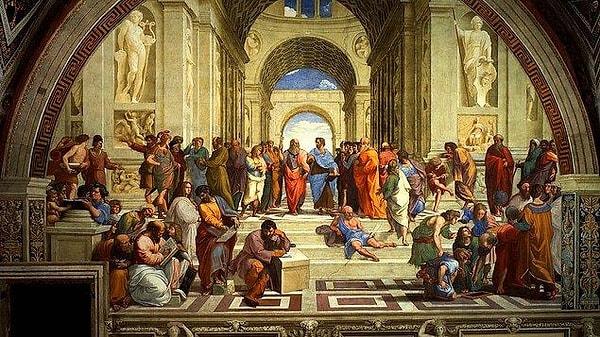
Scuola di Atene, with its original name - in Italian - is a fresco painted by Italian painter Raffaello Sanzio between 1509-1511. The work includes philosophers and scientists such as Plato, Aristotle, Diogenes, Euclid. Leonardo Da Vinci modeled for the figure of Plato and Michelangelo for Heraclitus. Raffaello also drew himself at the bottom of the steps, looking out to the right. It is exhibited in the Raffaello Rooms.
11. American Gothic
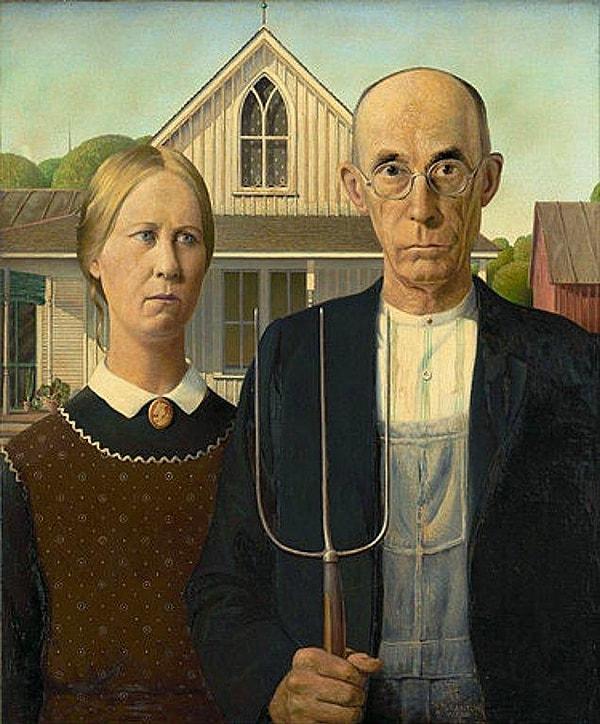
Painted by American painter Grant Wood in 1930. It is a painting of a man with a pitchfork and two people, some sources say his wife, others say Wood's sister (Nan Wood Graham). The house is in rural Iowa and still attracts visitors. The work is on display at the Art Institute of Chicago in the United States.
12. Saturn Devouring His Son
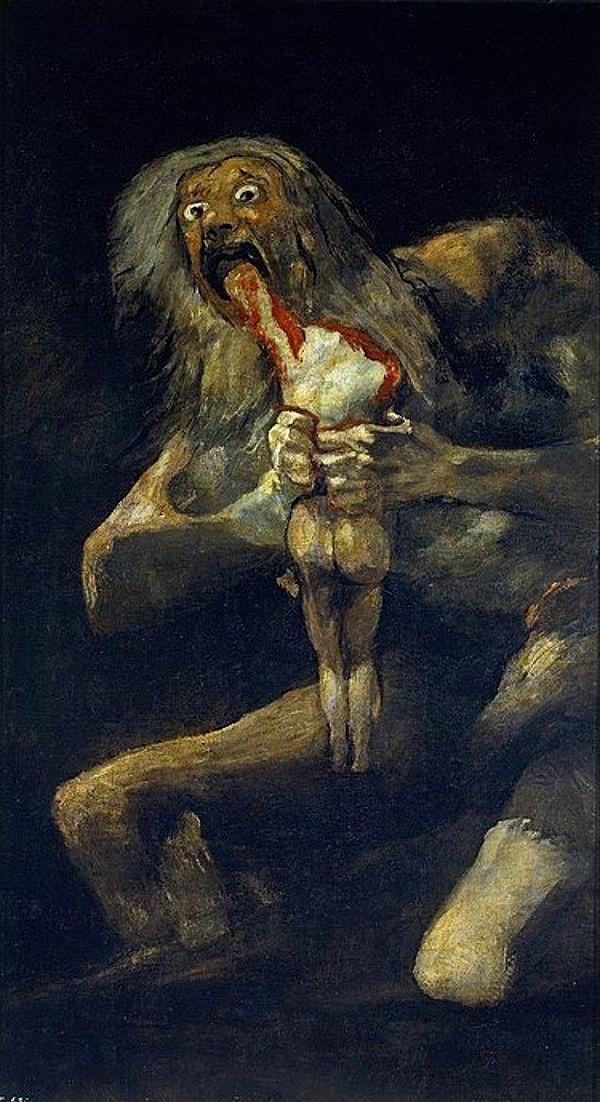
Originally titled Saturn Devouring His Son, it depicts the mythological figure Saturn devouring his own son by Spanish painter Francisco Goya. In this painting, which is thought to have been painted between 1819 and 1823, it is rumored that Saturn's sons would depose Saturn from his throne, and Saturn is said to have eaten all his sons alive for this reason, but Saturn's last child, Jupiter, killed Saturn. This work is on display at the Museo del Prado in Madrid, Spain.
13. The Son of Man
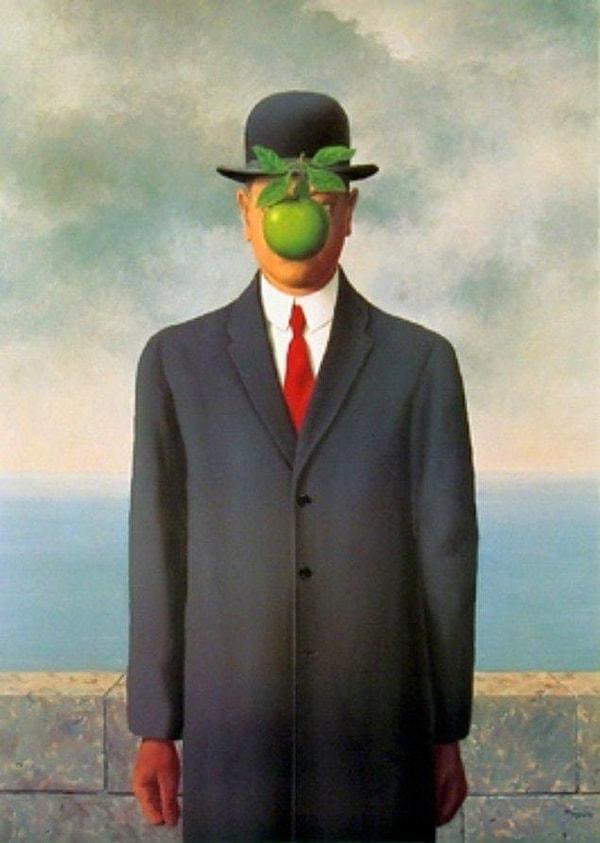
The painting is a self-portrait by Belgian painter René Magritte in 1964. For the painting of the man whose face is covered with a green apple; Magritte states that he wants to explain that people are always hidden from what they want to see, that man is always looking for what is hidden. Since the work has been purchased, it is not exhibited anywhere.
14. The Gross Clinic
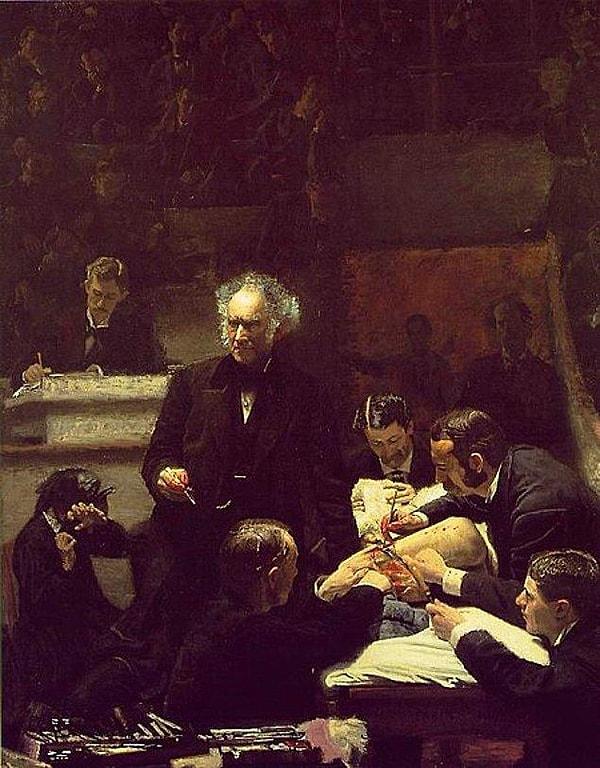
Painted by American artist Thomas Eakins in 1875, this work depicts Dr. Samuel Gross and his students examining a cadaver at Jefferson Medical College and is on display at the Philadelphia Museum of Art.
15. Las Meninas
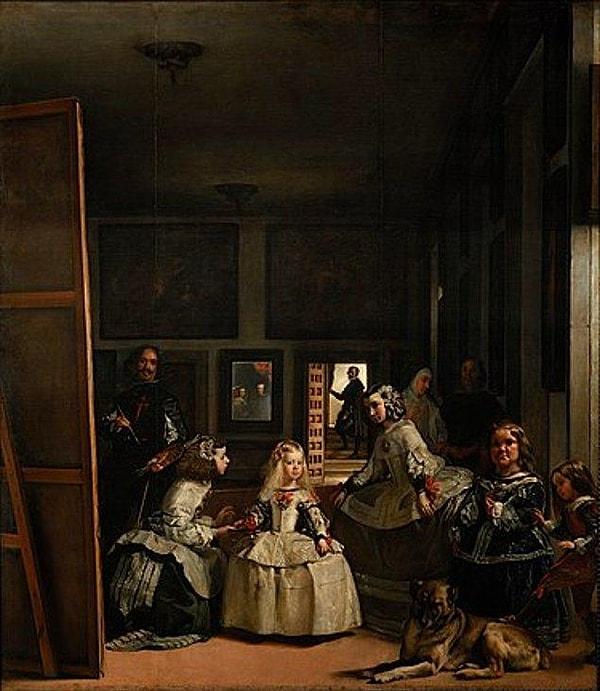
Las Meninas is a 1656 work by Diego Velazquez, one of the most important painters of the so-called Spanish Golden Age (Late Medieval Spain). It is a depiction of the room where the royal family resides in Madrid. Velazquez is also present in this painting (left). One of its important features is that it is considered the first three-dimensional painting in the history of art. The work is exhibited in the Museo del Prado in Madrid.
Keşfet ile ziyaret ettiğin tüm kategorileri tek akışta gör!


Send Comment